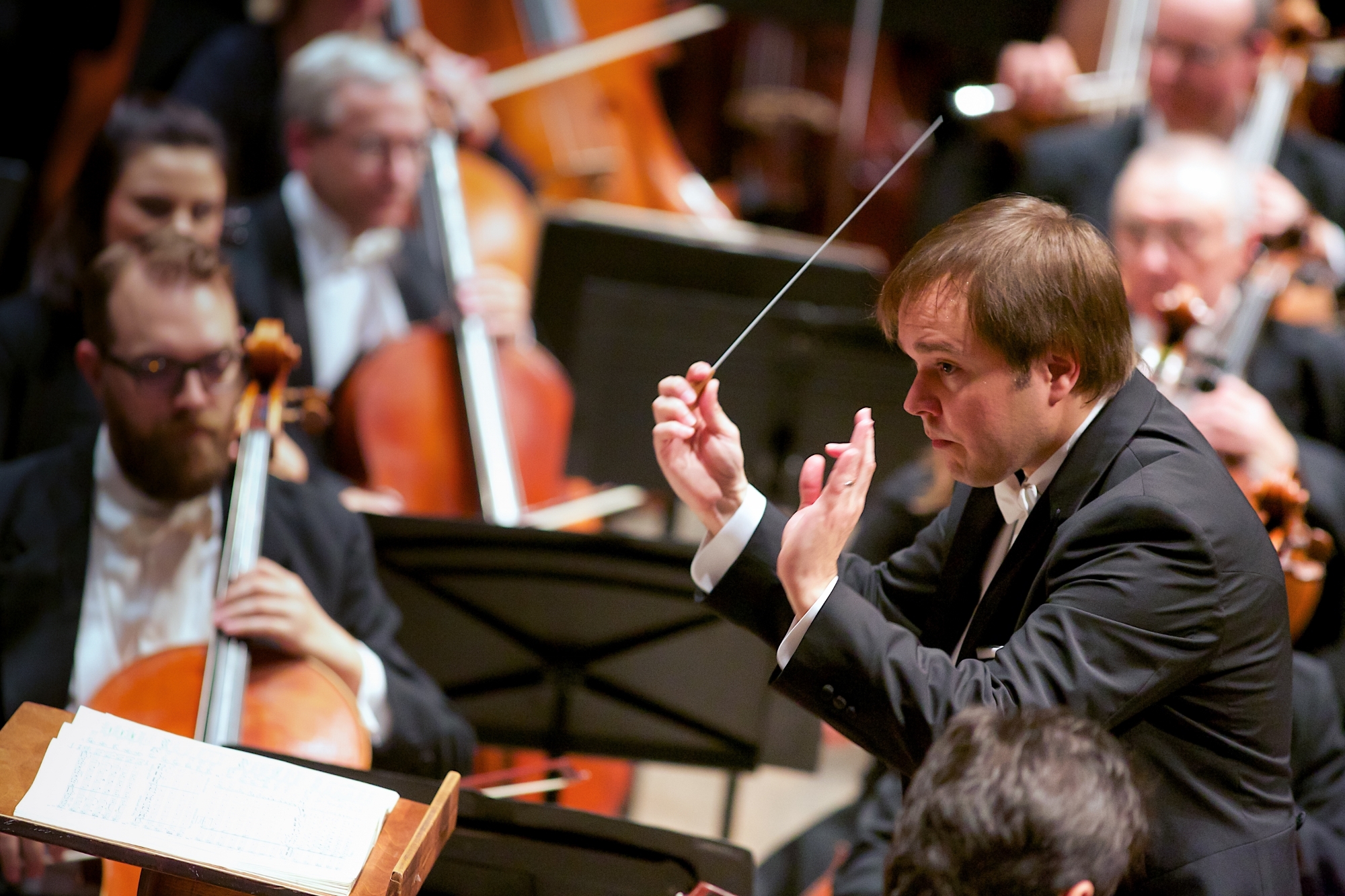For 127 years, Carnegie Hall has showcased phenomenal soloists, orchestras and ensembles. An estimated 50,000 performances have taken place in the iconic New York City concert hall. Its walls are embedded with stirring musical history, from Tchaikovsky conducting one of his own works on the night the building opened, to the first assembly of the YouTube Symphony Orchestra in 2009. Nina Simone, Bob Dylan and Beyonce have all performed on its stage.
As of April 20, the Grand Rapids Symphony (GRS) will have two threads knitted into this rich tapestry. The orchestra returns to Carnegie next week alongside Nelson Freire, a universally-renowned Brazilian pianist, and the Grand Rapids Symphony Chorus. On Friday, April 13, Music Director Marcelo Lehninger led the GRS in a preview performance for the orchestra’s home audience.
The concert opened with Maurice Ravel’s “Bolero,” a crowd pleaser that loops a sinuous 16-bar melody for its entirety. The piece demands two ingredients for success: obsessive marking of time that drives toward oblivion, and adventurous pursuit of timbral variety. Each time the melody is passed between different soloists and combinations of instruments, the perspective of the piece should shift.
The orchestra’s performance last night offered heart-pounding moments, notably when the strings took over the theme with flawless uniformity. It was a disappointment, however, to hear several soloists fumble phrases and struggle to sustain lines as they passed around the melody.
Freire joined the orchestra for the next two works on the program: “Momoprecoce” by Brazilian composer Heitor Villa-Lobos and “Nights in the Gardens of Spain” by Spanish composer Manuel de Falla. “Momoprecoce” evokes childhood memories of Carnival, Brazil’s famous festival. Freire has championed the rarely performed piece in recent years, and his interpretation of the work is peerless. His gentile, no-fuss virtuosity brought crisp transparency to the piece’s colorful vignettes, as though wiping away the cobwebs of memory for the audience. Lehninger did a masterful job of leading the orchestra through many rhythmic shifts.
While “Momoprecoce” was a traversal through time, “Nights in the Gardens of Spain” was a journey through place. Some parts of the impressionistic piece are inspired by real locations in Spain, while others explore the corners of the imagination. Freire’s response was honest and direct, imbuing its dreamy themes with atmospheric nostalgia rather than sentimentality. The orchestra’s seamless accompaniment added to the overall mystery and allure. Freire did not treat the audience to an encore; but luckily, he makes an appearance at the Gilmore Keyboard Festival later this month.
The Grand Rapids Symphony Chorus appeared onstage for “Chôros N. 10,” another work by Villa-Lobos. The composer’s 14 “Chôros” stylize 19th-century Brazilian street music, and are a product of his most innovative period. “Chôros N. 10” is one example of how Villa-Lobos brought diverse musical traditions together to create sounds that are unique to classical music even today.
The GRS orchestra conjured a dense landscape replete with cicada-like chirps, woodwind bird songs, and jolts of percussion. A powerful entrance by the choir encapsulated the lamenting core of the work, and the ensemble grooved together toward an exhilarating finale. For an encore, the orchestra and chorus performed Gabriel Fauré’s “Pavane,” as lovely as it was straightforward.
The collaboration with Nelson Freire and the inclusion of Villa-Lobos’ work stand out as two jewels on this Carnegie Hall program. The artistic decision signals a desire to bridge cultures and widen the horizons of traditional classical music audiences, and it’s inspiring to imagine how the GRS might continue along this trajectory in coming seasons.
Carnegie Hall Preview
Grand Rapids Symphony
April 13-14
grsymphony.org





